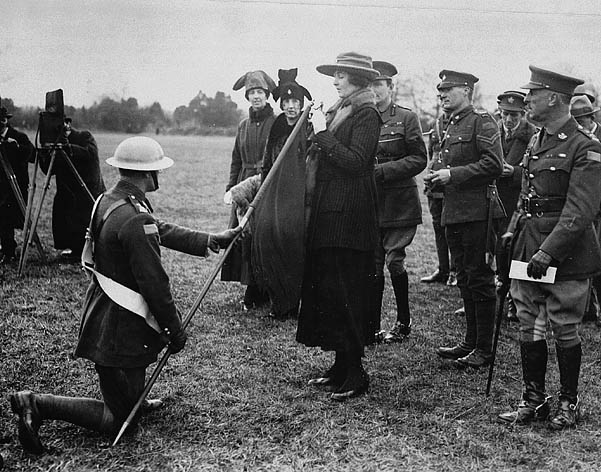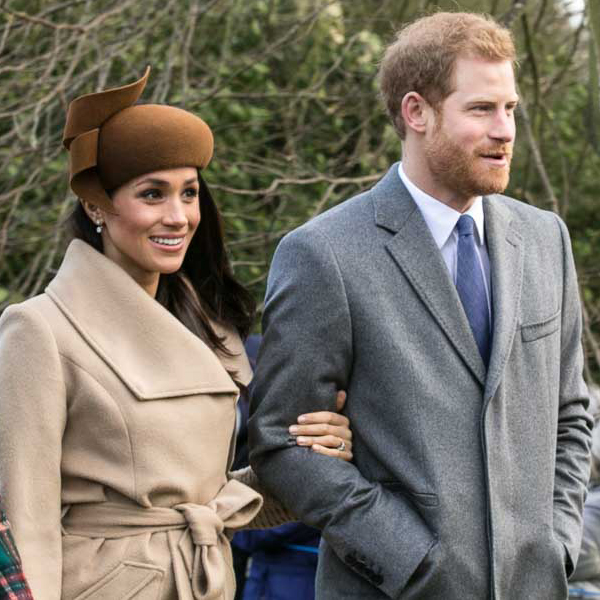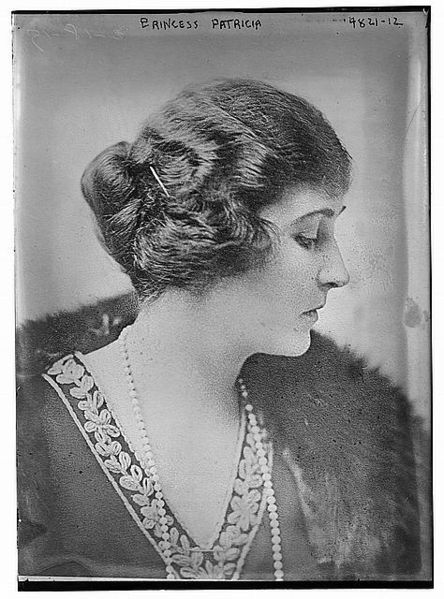There have been royal tours of Canada since the late 18th century, but some royalty stayed for longer than a few days or weeks and became property owners and/or long-term residents of Canada. Some lived in Canada on official business as military leaders or governors general, while others fled war, revolution or the paparazzi to find a safe haven. Here are 10 examples of royalty who lived in Canada.

1. Prince Edward, Duke of Kent and Strathearn (1767–1820)
The fourth son of King George III, Prince Edward pursued a military career. In 1791, Prince Edward was stationed in Quebec City. In a speech delivered in French following the 1792 elections to Lower Canada’s Legislative Assembly, he stated, “Let me hear no more of the odious distinctions of French and English. You are all his Britannic Majesty’s Canadian subjects.” In 1794, he became military commander of Nova Scotia and New Brunswick and strengthened the defences of Citadel Hill in Halifax. In 1798, St. John’s Island separated from Nova Scotia to become a separate colony and was renamed Prince Edward Island in his honour in 1799. After a year as commander-in-chief of British forces in North America, he returned to Britain in 1800 and married Princess Victoire of Saxe-Coburg-Saalfeld in 1818. Their daughter, the future Queen Victoria, was born in 1819.

2. Princess Louise (1848–1939) and Lord Lorne (1845–1914)
In 1878, Queen Victoria’s son-in-law John Campbell, Lord Lorne, became governor general of Canada. He and his wife, Princess Louise Caroline Alberta, settled at Rideau Hall in Ottawa, where Princess Louise, a talented painter and sculptor, transformed one of the rooms into an artist’s studio. Princess Louise and Lord Lorne played a key role in the founding of the Royal Canadian Academy of Arts and the National Gallery of Canada. Louise was injured in a sleighing accident in 1880 and spent extended periods convalescing in Europe and Bermuda. The couple undertook the first royal visit to British Columbia in 1882 and returned to Britain at the end of Lorne’s term as governor general in 1883. Lake Louise and the province of Alberta are both named for Louise.

3. The Duke of Connaught (1850–1942) and Duchess of Connaught (1860–1917)
The third son of Queen Victoria, Prince Arthur, Duke of Connaught, received military training in Canada as an officer with the Montreal detachment of the Rifle Brigade in 1869–70. He also crossed Canada on the Canadian Pacific Railway in 1890. In 1911, the Duke of Connaught became governor general of Canada and moved into Rideau Hall with his wife, Princess Louise Margaret of Prussia, Duchess of Connaught, and their daughter Princess Patricia. During the First World War, the Duke reviewed regiments, toured hospitals and inspected auxiliary military services while the Duchess established the Duchess of Connaught Hospital Fund. The Duke and Duchess of Connaught returned to Britain at the end of the duke’s term as governor general in 1916.

4. Princess Patricia of Connaught (1886–1974)
The Duke and Duchess of Connaught’s daughter Princess Patricia became a prominent public figure during the duke’s term as governor general, serving as hostess at Rideau Hall during her mother’s illnesses. During the First World War, she became honorary colonel-in-chief of Princess Patricia’s Canadian Light Infantry regiment and embroidered the regimental colours herself. She contributed her paintings to Canadian exhibitions and galleries. In 1917, her image appeared on the $1 bill.

5. King Edward VIII (1894–1972)
In 1919, the future King Edward VIII purchased a ranch in Alberta during a royal tour, naming the property the E.P. (Edward Prince) Ranch and raising cattle, sheep and horses imported from the Duchy of Cornwall in the United Kingdom. His father, King George V, did not approve of his son becoming a property owner in Canada because he was concerned that the other Dominions would also expect the prince to purchase land during his tours. Nevertheless, Edward kept the property until 1962, visiting during his Canadian tours as Prince of Wales and after his abdication in 1936.

6. The Earl of Athlone (1874–1957) and the Countess of Athlone (1883–1981)
The Earl of Athlone (born Prince Alexander of Teck) accompanied his brother-in-law and sister, the future King George V and Queen Mary, on their Canadian royal tour in 1901. In 1940, the Earl of Athlone became governor general of Canada. The Countess of Athlone was a granddaughter of Queen Victoria and a niece of both Princess Louise and the Duke of Connaught. The Earl and Countess of Athlone hosted the Quebec Conferences during the Second World War and travelled extensively in Canada in support of the war effort. They returned to Britain at the end of the Earl of Athlone’s term as governor general in 1946.

7. Princess Margriet of the Netherlands (1943–)
Following the German occupation of the Netherlands during the Second World War, the Dutch royal family fled to the United Kingdom. While Queen Wilhelmina remained in Britain, her daughter, Crown Princess Juliana, and granddaughters Beatrix and Irene spent the war in Ottawa, living first at Rideau Hall and later at Stornoway. On 19 January 1943, Juliana’s third daughter, Princess Margriet, was born at the Ottawa Civic Hospital in a maternity ward that the Earl of Athlone declared extraterritorial so that the royal baby would only have Dutch citizenship. Margriet returned to Canada on numerous occasions as an adult, attending tulip festivals in Ottawa, meeting with veterans and receiving an honorary degree from McMaster University. (See also Liberation of the Netherlands.)

8. Zita of Bourbon-Parma, Empress of Austria (1892–1989)
While the Dutch royal family lived in Ottawa during the Second World War, Quebec became a refuge for French-speaking European royalty. After the fall of the Austrian House of Habsburg in 1918 and the death of her husband, Zita of Bourbon-Parma, the former Empress of Austria, settled in Belgium with her children. Following the German invasion of Belgium, the family moved to Quebec so that her children could continue their education in French. One of Zita’s daughters graduated from Laval University with a degree in economics. Quebec was also the wartime home of Zita’s sister-in-law Princess Charlotte of Luxembourg.

9. Grand Duchess Olga of Russia (1882–1960)
The youngest sister of Czar Nicholas II of Russia, Grand Duchess Olga fled Russia in 1919 with her second husband, Nikolai Kulikovsky, and two young sons, Tikhon and Guriy, in the aftermath of the Russian Revolution of 1917. The family settled in Denmark until the proximity of Soviet troops after the Second World War prompted their emigration to Canada in 1948. Olga and Nikolai purchased a farm in Campbellville, then moved to Cooksville in 1952. Olga was a talented watercolour artist, and her paintings were exhibited in Toronto. Olga died in an apartment above a beauty salon in Toronto in 1960.

10. Prince Harry (1984–) and Meghan, Duke and Duchess of Sussex (1981–)
In 2019, Queen Elizabeth II’s grandson Prince Harry and his wife, Meghan, decided to spend Christmas in Canada with their baby son, Archie. During a brief return to the United Kingdom in 2020, Harry and Meghan visited Canada House on 7 January to thank Canadians for their hospitality. Soon after, they announced that they were stepping back from their roles as senior members of the royal family and moved to Vancouver Island. Harry, Meghan and Archie remained in British Columbia until March 2020, when they moved to California.

 Share on Facebook
Share on Facebook Share on X
Share on X Share by Email
Share by Email Share on Google Classroom
Share on Google Classroom










